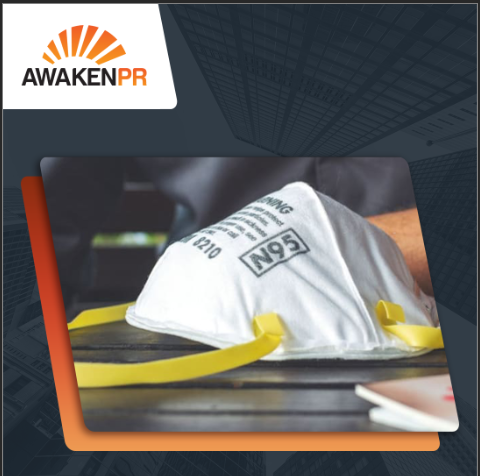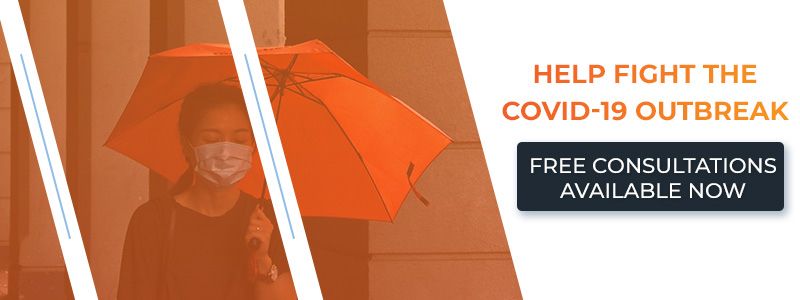There are best practices for individuals and nonprofit organizations that wish to donate or manufacture PPE for hospitals in need. Here are our professional tips and resources.

How You Can Get PPE to Hospitals
As we are all too painfully aware, the unprecedented outbreak of COVID-19 has left hospitals and health care centers across the world with life-threatening shortages of personal protective equipment (PPE) including N95 respirators, surgical masks, gowns, gloves, respirators, goggles and face shields.
PPE is critical to prevent the spread of the virus and protect our healthcare workers, heroes on the front lines who are risking their lives everyday to fight this brutal pandemic and save lives.
At AWAKEN PR, we pride ourselves in providing cutting-edge strategic and crisis communications on social, political and public health issues that impact organizations, companies, nonprofit foundations and individuals alike.
In this timely article, we provide you with the best practices for how to supply hospitals with much-needed PPE in a manner that will help the most people as efficiently and effectively as possible in the midst of this terrible pandemic.
Use Technology to Your Advantage
Individuals who may have panic-purchased or stockpiled face masks should start by visiting a peer-to-peer connection platform like Mask Match. This site connects individuals with local hospital and healthcare personnel in need of N95 masks and antiviral protective gear based on the type and manufacturer of the materials. If you have at least five masks to donate, we strongly suggest that you take advantage of this opportunity to connect with and help our at-risk healthcare professionals. You can conveniently send the masks from your home, so don’t worry about contracting anything dangerous in the process!
Share Surplus PPE
Scientists and engineers have already joined forces to create an online database of professionals with an excess supply of PPE material. PPE Link is an effective tool for getting in touch with professionals who need your assistance and generosity.
There are also many donation sites around the country. Find a location where you can do your part to flatten the curve by visiting Find The Masks or #GetUsPPE.
Reach Out Directly
It’s crucial that before you donate, you get in touch with the hospital or healthcare facility you’re hoping to help. Make sure, first of all, that they are accepting donations or are in need of them. You never know if your supplies might be put to better use at a facility you hadn’t considered, and directly contacting hospitals can help point you in the right direction.
Can You Make PPE Masks Yourself?
Contrary to what some individuals and organizations may believe, it is entirely possible to make PPE masks to stifle the spread of the Coronavirus. Those with access to a standard 3D printer can follow instructions and tutorial videos on how to manufacture the masks and respirators, then test their qualitative fit by ordering an OSHA-certified testing kit from a company like Moldex. It also makes sense to check on FDA guidelines for 3D printing of PPE.
You can also sew masks out of fabric, or better yet, a HEPA filter vacuum bag as recommended by Dr. Ryan Southworth, an emergency medicine physician and EMS medical director in the Phoenix area. According to Southworth, HEPA is an OSHA certified filter that can filter out 99.97 percent of airborne particulate matters compared to 95 percent for a typical N95 mask.
Still Not Sure Where to Donate?
If you’re still not sure where you can donate masks, respirators and other gear to protect against the spread of COVID-19, check with your local state health department. These government agencies and other public officials are already partnering with companies and nonprofits alike in order to source desperately needed healthcare products.
Final Thoughts
What’s most important during this crisis of the coronavirus pandemic is that healthcare workers have access to the protective masks and face gear they need. If you’re adhering to quarantine protocol and work-from-home instructions, you are at a lower risk for contracting the virus and it is not nearly as crucial to cover your face, though the CDC just recommended wearing cloth face coverings in public settings such as grocery stores and pharmacies. And U.S. Attorney General Dr. Jerome Adams demonstrates just how simple it is to make your own in a video posted on the CDC website.
To that end, you can make a non-professional face mask with a scarf or fabric. But if you have any PPE masks or respirators on hand, please get those to your healthcare professionals as soon as possible. Their lives and all of our lives depend on it.

